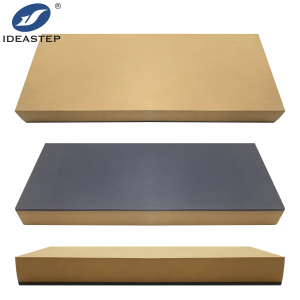
EVA (ethylene-vinyl acetate) is a versatile and widely used material in various industries, including footwear, sports equipment, and packaging. One of the key characteristics of EVA is its hardness, which can significantly impact its performance and suitability for different applications. In the previous blog” Is EVA Insole Elasticity Good?“, we discussed the elasticity of EVA. In this article, we will delve into the hardness range of EVA and its implications for various uses.
1. Understanding EVA Hardness
EVA is available in a wide range of hardness levels, typically measured on the Shore A hardness scale. This scale quantifies the hardness of elastomeric materials, with lower Shore A values indicating softer materials and higher values indicating harder materials. EVA hardness can vary from very soft (Shore A 20) to very hard (Shore A 90+), offering a broad spectrum of options for manufacturers and designers.
2. Implications for Footwear
In the footwear industry, EVA is commonly used in midsoles, outsoles, and insole materials. The hardness of EVA in these applications directly affects cushioning, support, and overall comfort. Softer EVA formulations (lower Shore A values) are often preferred for midsoles and insoles, as they provide enhanced shock absorption and conform to the shape of the foot, contributing to a comfortable walking or running experience. On the other hand, harder EVA (higher Shore A values) is typically utilized in outsoles to offer durability, abrasion resistance, and stability.
3. Sports Equipment and Padding
EVA’s hardness range also plays a crucial role in sports equipment and padding applications. In protective gear such as helmets, knee pads, and elbow pads, softer EVA foam can offer impact absorption and comfort. Conversely, harder EVA foam is utilized in sports mats, gym flooring, and equipment padding to provide support and resilience against heavy loads and repeated impacts.
4. Packaging and Industrial Applications
In packaging and industrial settings, EVA foam with varying hardness levels is employed for shock absorption, vibration dampening, and protective cushioning. Soft EVA foam is utilized for delicate item packaging and cushioning. While harder EVA foam provides structural support in industrial applications such as gaskets, seals, and insulation.
5. Customization and Design Flexibility
The wide hardness range of EVA allows for customization and design flexibility across industries. Manufacturers can select the appropriate hardness level of EVA to tailor the performance characteristics of their products. Meeting specific requirements for comfort, durability, impact protection, and other functional attributes.
The diverse hardness range of EVA makes it a highly adaptable material suitable for a wide array of applications. We are an EVA Manufacturer, if you are interested in our products, you can continue to visit this page (https://www.aideastep.com/eva-blocks-top-covers-for-cad-cam-milling/) and tell us your needs.
